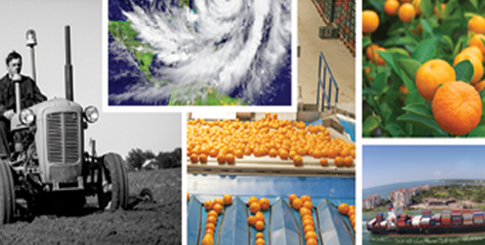Months later, another hurricane in late September 1928 with 125 mile-per-hour winds, slams into Palm Beach.
Although the storm causes minimal coastal damage, 40 miles inland the storm surge pushes water out of the southern edge of the Lake Okeechobee, flooding hundreds of miles.
Houses and buildings are swept away in Belle Glade, Canal Point, Chosen, Pahokee, and South Bay, killing an estimated 2,500 people—mostly African-American sugar plantation workers, making it the deadliest hurricane in Florida history.
As the Great Depression rears its ugly head, Florida farmers discover a tiny little fly that will have a significant effect on the ag industry.


Photograph courtesy of Seald Sweet International.
One of the world’s most destructive pests, the Mediterranean fruit fly (Medfly for short) spreads quickly and results in mass citrus losses across the Sunshine State.
The threat unites state and federal forces to help stop the pest’s destruction.
The eradication effort spans 20 counties and involves trapping, scouting, bait sprays, stricter controls in groves and packin houses, and division of the state into infested and protective zones.
By the time officials declare the Medfly eradicated the next year, the program has cost around $7.5 million.
Harris Wishnatzki arrives in Plant City in 1929, an immigrant from Russia who had been living in New York City since 1900. He begins selling produce from a pushcart, which eventually blossoms into a wholesale business.
“When my grandfather Harris Wishnatzki first came to Plant City, the industry was much different,” says Gary Wishnatzki, president and CEO of Wish Farms, in Plant City.



